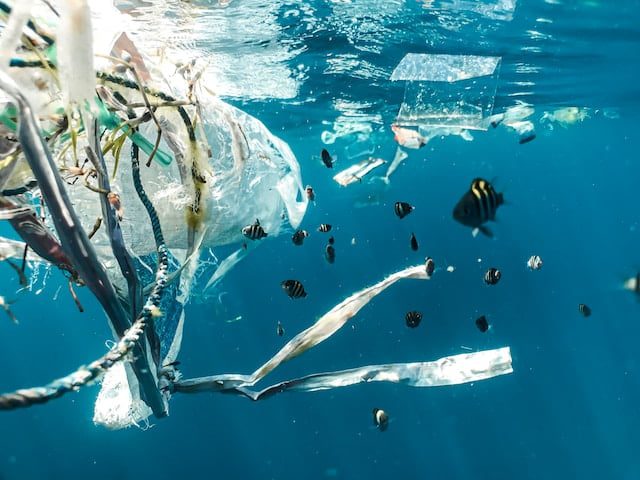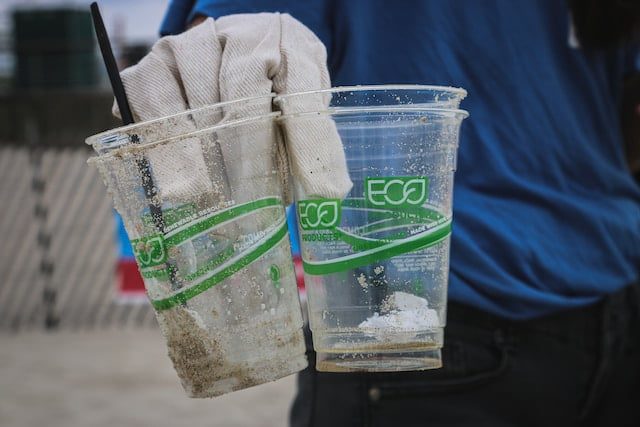Tanace Organics Pvt. Ltd

A Deep Dive into Material Biodegradability: Uncovering the Remarkable Eco-Friendly Potential .
Welcome to our exploration of the fascinating world of biodegradability. In this article, we will embark on a journey to understand the intricate science and significance of materials that naturally return to the Earth. Biodegradability, a term gaining momentum in our eco-conscious world, holds the promise of a sustainable, cleaner future. From biodegradable plastics to textiles and beyond, we will uncover the secrets of how certain materials break down into the environment, leaving behind no harmful residues. Join us as we delve into the essential concept of biodegradability and its pivotal role in building a greener, more eco-friendly world for generations to come.
Table of Contents
What Is Biodegradability?
Biodegradability is a fundamental ecological concept that denotes the ability of materials to naturally decompose and reintegrate into the environment, without leaving harmful traces behind. This remarkable process is orchestrated by microorganisms such as bacteria, fungi, and enzymes, which dismantle the chemical structure of materials into simpler components. These components, in turn, become part of the natural ecosystem, nourishing the planet rather than burdening it. Biodegradable materials are a sustainable alternative to traditional non-biodegradable counterparts, making them essential in the quest for an eco-friendly future. Understanding the essence of biodegradability is key to minimizing waste, pollution, and environmental harm.
Importance of Biodegradability
The importance of biodegradability cannot be overstated. Biodegradable materials play a pivotal role in reducing environmental impact, supporting sustainable manufacturing practices, and enriching the soil. By breaking down naturally, these materials alleviate pollution, conserve resources, and promote healthier ecosystems, contributing to a more sustainable and eco-friendly world.
Environmental Impact
One of the primary reasons to focus on biodegradable materials is their minimal environmental impact. Traditional, non-biodegradable materials like plastics can take hundreds of years to decompose, leading to pollution and resource depletion. In contrast, biodegradable materials help reduce waste and pollution, mitigating the harm to our planet.

The environmental impact of non-biodegradable materials, like plastics, is severe, as they persist for centuries, causing pollution and habitat destruction. In contrast, biodegradable materials break down naturally, reducing waste and lessening the burden on our planet. This difference has a profound and positive impact on our environment.
Sustainable Manufacturing
Biodegradable materials also play a crucial role in sustainable manufacturing. The production of biodegradable products often involves fewer non-renewable resources, thus lowering the overall carbon footprint of manufacturing processes. This contributes to a more sustainable and eco-friendly industrial landscape.
Sustainable manufacturing represents a pivotal shift in industrial practices, focusing on minimizing ecological footprints and ensuring long-term viability. This approach emphasizes the use of biodegradable materials, energy-efficient processes, and reduced waste generation. Sustainable manufacturing minimizes resource depletion, lowers greenhouse gas emissions, and promotes eco-conscious practices. By implementing green technologies and adopting eco-friendly materials, industries can significantly reduce their environmental impact, contributing to a cleaner, more sustainable future. This approach is not only environmentally responsible but also economically viable, as it reduces operational costs and aligns businesses with the growing demand for environmentally friendly products and practices in today’s market.
Soil Enrichment
Biodegradability isn’t limited to reducing waste; it also enriches the soil. As biodegradable materials break down, they release essential nutrients into the soil, promoting healthier plant growth. This, in turn, supports sustainable agriculture and reduces the need for chemical fertilizers.
Soil enrichment is a valuable outcome of biodegradability. When biodegradable materials break down, they release essential nutrients into the soil, enhancing its fertility. This process promotes healthy plant growth, reduces the need for chemical fertilizers, and fosters sustainable agriculture. By enriching the soil, biodegradability contributes to a more resilient and productive agricultural landscape. It also supports the ecosystem by ensuring that organic matter is efficiently cycled back into the environment. Soil enrichment is a vital component of a greener and more sustainable world, where agriculture can thrive while minimizing its environmental impact.
Biodegradable vs. Non-Biodegradable Materials
Biodegradable Materials or Eco Friendly Products
- Biodegradable Plastics
These plastics are designed to break down quickly, reducing the environmental burden of traditional plastics. They can be used for various applications, from packaging to disposable cutlery.
Biodegradable plastics are an eco-conscious alternative to traditional plastics. Designed to break down rapidly, they significantly reduce the environmental impact of plastic waste. These materials can be used for various applications, from packaging to disposable cutlery, making them a sustainable choice in a world seeking to minimize plastic pollution and promote greener practices.

- Biodegradable Textiles
Fabrics like organic cotton and hemp are examples of biodegradable textiles. They decompose naturally, eliminating the need for landfill disposal.
Biodegradable textiles, such as organic cotton and hemp, decompose naturally, reducing the need for landfill disposal. These sustainable fabrics are environmentally friendly alternatives to traditional textiles. They offer a solution for reducing waste and the environmental footprint of the fashion industry while providing consumers with eco-conscious choices.
Non-Biodegradable Materials
- Plastics
Non-biodegradable plastics are a significant concern, as they persist in the environment for centuries, leading to pollution and habitat destruction.
Non-biodegradable plastics are a significant environmental concern. Their persistence in the environment for centuries leads to pollution, habitat destruction, and resource depletion. The slow degradation of plastics poses a serious threat to our ecosystems, making the adoption of biodegradable alternatives critical in the effort to reduce plastic-related environmental harm.
- Metals
Materials like aluminum and steel do not biodegrade, making recycling a vital strategy for their sustainable use.
Metals, like aluminum and steel, are non-biodegradable materials that do not naturally break down. This property makes recycling a crucial strategy for their sustainable use. Recycling metals conserves resources, reduces energy consumption, and minimizes the environmental impact associated with their extraction and production, contributing to a more eco-friendly future.
Biodegradability in Everyday Life
Biodegradable materials are increasingly making their way into our daily lives. Here are some common examples:
- Biodegradable Packaging
Many companies are adopting biodegradable packaging for their products, reducing the environmental impact of excess packaging waste.
Biodegradable packaging is revolutionizing the way products are presented to consumers. This eco-friendly alternative to traditional packaging materials significantly reduces environmental impact. It consists of biodegradable plastics, paper, or other natural materials that break down over time, leaving no harmful residues. Biodegradable packaging minimizes plastic waste, pollution, and resource depletion. Companies across various industries are adopting these sustainable packaging options, driven by consumer demand for environmentally responsible choices. As the importance of sustainability grows, biodegradable packaging is a critical step toward reducing our carbon footprint and promoting a greener, more eco-conscious approach to packaging and product presentation.
- Biodegradable Utensils
Eco-friendly utensils made from biodegradable materials are gaining popularity, reducing the use of non-recyclable plastics.
Biodegradable utensils are a practical and sustainable response to the global issue of single-use plastic waste. Made from materials like biodegradable plastics or plant-based materials, they offer a guilt-free alternative to traditional non-recyclable plastics. These utensils break down naturally, leaving no trace of pollution or harm to the environment. They’re commonly used in restaurants, food service industries, and by eco-conscious consumers looking to minimize their impact on the planet. Biodegradable utensils align with the growing movement to reduce plastic waste, and they play a vital role in encouraging greener, more sustainable dining practices for a cleaner and healthier planet.

- Biodegradable Cleaning Products
Eco-conscious consumers can now choose biodegradable cleaning products that break down safely without harming the environment.
Biodegradable cleaning products are a significant advancement in household and commercial cleaning. These products are designed to break down naturally, without leaving harmful residues or chemicals in the environment. They are made from eco-friendly ingredients that are biodegradable, non-toxic, and safe for both users and the planet. Biodegradable cleaning products help reduce water pollution, lessen the environmental impact of cleaning routines, and promote sustainable living. As consumers increasingly prioritize environmental consciousness, these products have gained popularity, offering a responsible and effective alternative to traditional, chemical-laden cleaning agents. They are a vital component of a cleaner, greener, and more sustainable future.
The Future of Biodegradability
The future of biodegradability looks promising. Researchers are constantly working on innovative solutions to make various materials biodegradable. From biodegradable electronics to construction materials, the possibilities are vast. These advancements promise a cleaner, more sustainable world for future generations.
The future of biodegradability holds great promise in our quest for a more sustainable world. Researchers and innovators are continually pushing the boundaries of biodegradable materials and applications. From biodegradable electronics that reduce e-waste to construction materials that break down naturally, the possibilities are limitless.
This path leads to a cleaner, more eco-conscious planet where materials and products have minimal environmental impact. The future of biodegradability isn’t just about waste reduction; it’s about fostering innovation and embracing responsible technologies to create a healthier, more sustainable future for generations to come. As we advance, our world becomes more biodegradable, eco-friendly, and harmonious with nature.
Conclusion
In the quest for a more sustainable and environmentally friendly world, understanding the importance of biodegradability is crucial. By choosing biodegradable materials and supporting eco-friendly practices, we can all contribute to a healthier planet and a brighter future. Together, we can outrank the challenges of waste and pollution, creating a more biodegradable and sustainable world for generations to come.
This article provides a comprehensive overview of biodegradability, its importance, and the impact it can have on our planet. By embracing biodegradable materials and encouraging sustainable practices, we can lead the way to a greener, more eco-conscious future.







